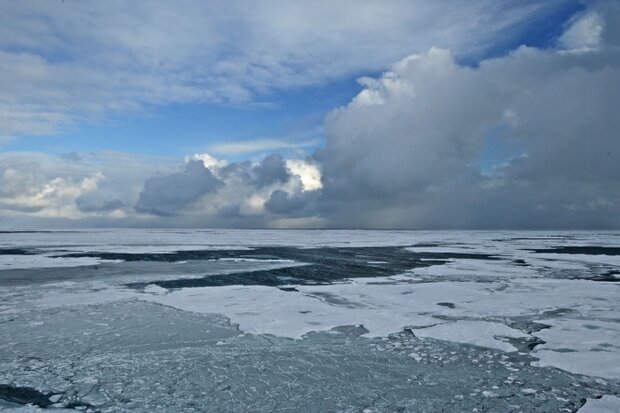Solid aerosols in Arctic atmosphere could impact cloud formation and climate

<p>Clouds float over Arctic sea ice. Credit: NOAA Research</p>

Clouds float over Arctic sea ice. Credit: NOAA Research
Atmospheric aerosols can impact climate by scattering or absorbing solar radiation or through water uptake and cloud formation that is determined by the size, composition or phase of the particles. With a rapid loss of sea ice, the Arctic atmosphere is subjected to more gas and aerosol emissions from the open waters, impacting cloud nucleation and warming the atmosphere. Particle phase is dependent on atmospheric conditions like relative humidity and temperature and can impact the uptake of water and other trace gases.
A new research published in the Proceedings of the National Academy of Sciences, and funded in part by CPO’s Atmospheric Chemistry, Carbon Cycle and Climate (AC4) program demonstrated the presence of solid organic-coated ammonium sulfate particles at high relative humidity in the Arctic boundary layer. The researchers discovered that ammonium sulfate particles, which should have been liquid, were solid. Solid aerosols have the potential to change how clouds form, and with a loss of Arctic sea ice, researchers expect to see more of these particles impacting cloud formation and climate.
Read more at the link below.